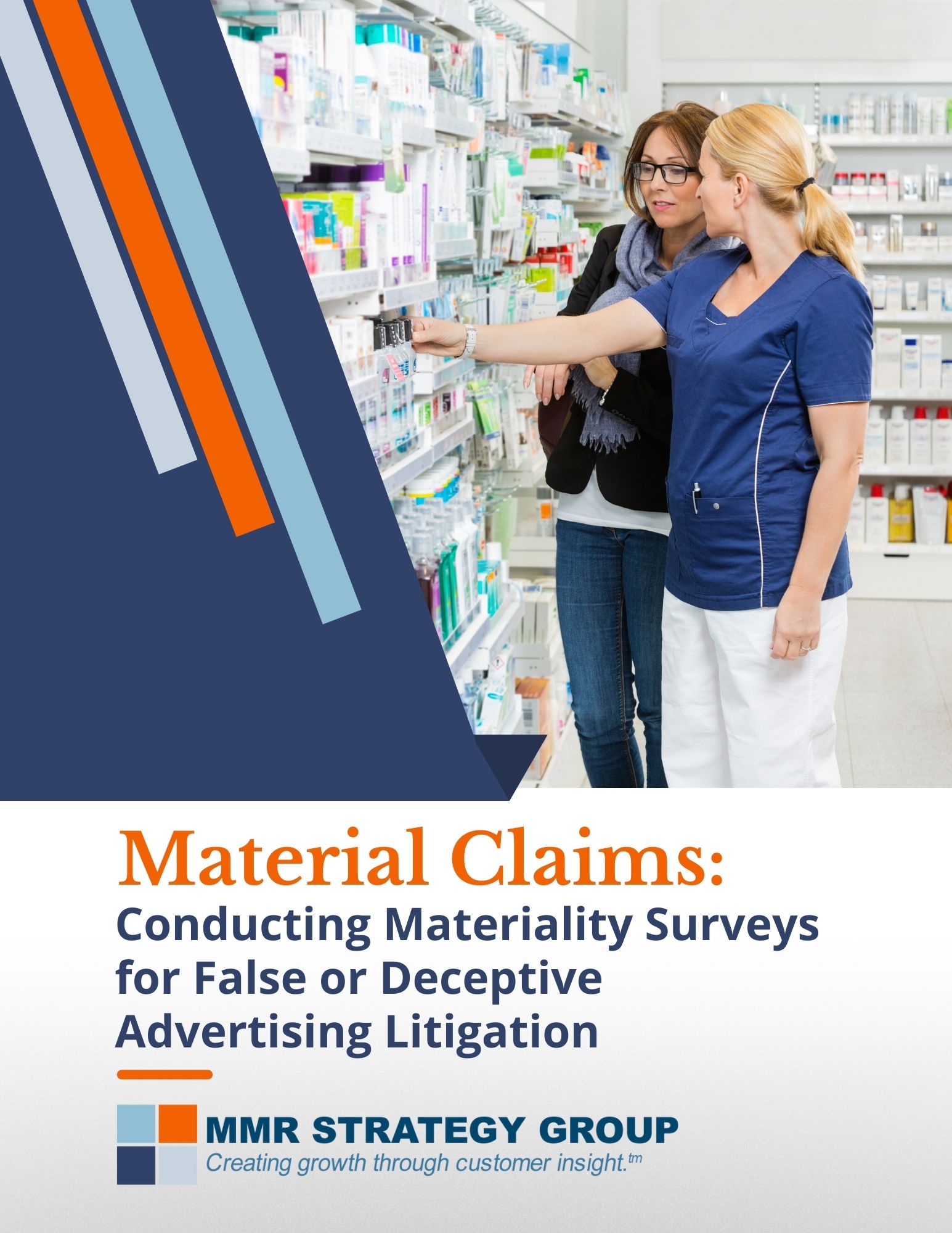Damages and Apportionment
Damages in intellectual property disputes are often assessed using surveys, including apportionment surveys. MMR Strategy Group experts design surveys and testify in cases where survey evidence is required to determine reasonable royalties and the amount of profit owed to a defendant.
Apportioning profits is one way of determining reasonable royalties under federal patent law. However, apportioning profits attributable to infringement can be difficult, requiring litigants to separate the effects of multiple product features. Apportionment surveys identify which part of the defendant’s profits can be properly attributed to the infringement, providing evidence that can be used to determine damages for trademark or patent infringement. They are particularly useful when there is no history demonstrating established or regular royalty rates, or comparable royalty agreements from which to draw an analogy.
MMR Strategy Group damage assessment surveys are carefully prepared to withstand the most rigorous scrutiny from courts and regulators. If you are involved in a case requiring an apportionment or damage assessment survey, contact MMR Strategy Group.
 How Are Damages and Apportionment Surveys Used in Litigation?
How Are Damages and Apportionment Surveys Used in Litigation?
Where there is little history upon which to calculate established or regular royalty rates, and parties must estimate reasonable royalties or lost profits, MMR Strategy Group may be called on to conduct surveys to help measure consumer behavior and attitudes.
Historically, there have been three ways to assess damages. The three methods are based on:
Lost profits: The profits that would have been made by the patentee if the infringement had not occurred.
Established Royalty: Royalties based on the patentee’s established or regular royalty rates.
Reasonable Royalty: Although there is a variety of approaches to reasonable royalties, one approach is what a willing licensee would have paid, and what a willing licensor would have accepted, if the license was negotiated just before the infringement started.
The negotiation, although hypothetical, considers factors known as the Georgia-Pacific factors. These include:
- Buying behavior, including the criteria that are considered in the buying process.
- Commercial success and sales.
- The ways that products or specific features are used, as well as the manner of their use.
- The communications that customers receive in the marketplace.
- Customer attitudes and impressions in the marketplace.
Surveys can provide measurements relevant to evaluating the Georgia-Pacific factors, which may be used to evaluate damages.
Explore Our Library
Review Litigation Survey Resources
Featured Blog Article

To Opt In or to Opt Out: Negative Option Marketing Guidance Minted by Consumer Surveys
Featured White Paper

Materiality Claims: Conducting Materiality Surveys for False or Deceptive Advertising Litigation
Featured case study
